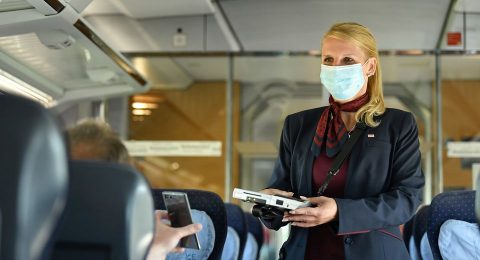
Research Deutsche Bahn: no increased risk corona infection train personnel
Source: DB AG/ Heiko Kalreit
According to research by German railway operator Deutsche Bahn and the Charité Research Organization train personnel with a lot of passenger contact do not have a higher chance of infection with the coronavirus. Around 1.100 DB staff was tested for infection with the virus and on antibodies.
Want to read more?
You have read all of your free premium articles for this month. Please become a subscriber to keep reading.
Subscribe now!
Take advantage of our exclusive offer to get full access to all premium content.



